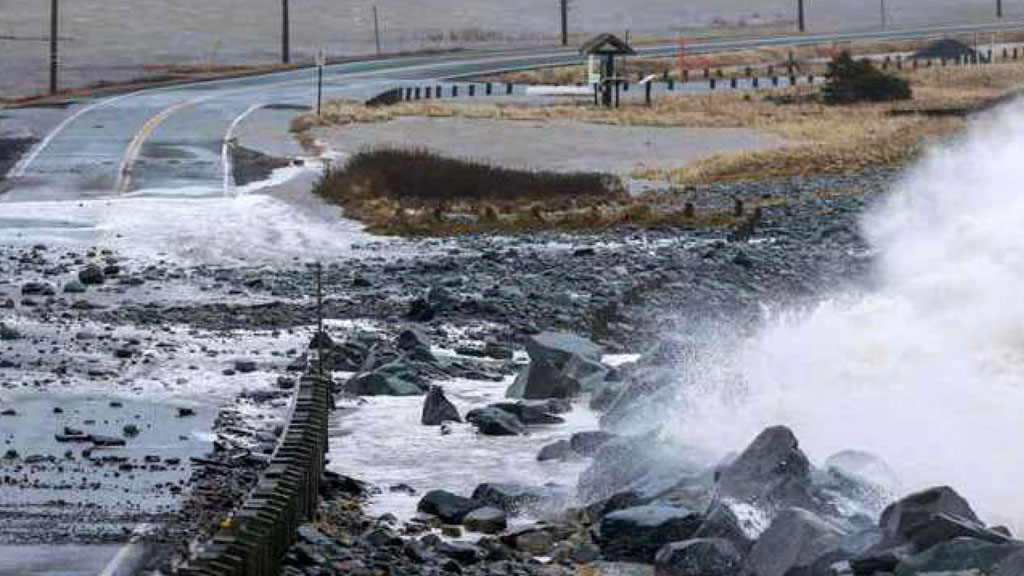Nova Scotia is fine-tuning regulations that will restrict construction projects that can be built along the provincial coastline in an effort to mitigate the damaging impacts of sea level rise due to climate change.
The regulations will create a coastal protection zone on either side of the high-water mark that extends inland by 80 to 100 metres.
The rules would add new requirements for building permits, development permits and development agreements within the zone, including the minimum distance from the water.
The regulations are part of the Coastal Protection Act (CPA) which is slated to come into effect in 2023 and set the requirements for new construction near the water.
They will create protections for sensitive coastal ecosystems and make sure construction is at a safer height and distance from coastal shorelines.
“Nova Scotia’s coastline is already vulnerable and we expect climate change impacts to become worse over the coming decades,” says John Somers, executive lead for the CPA. “The act provides a legislative framework for avoiding these negative impacts and the proposed regulations spell out the details.”
It will still be possible to build safe places within the coastal protection zone, but there will be strict requirements to ensure structures are protected from sea level rise, as well as coastal flooding and erosion.
The coastal protection zone will have both vertical and horizontal setbacks that will apply to municipal building and development permits for houses, cottages and commercial or industrial buildings with some exceptions like public infrastructure and commercial or industrial structures that need to be at the shoreline.
Other proposed exemptions being considered include trailers or mobile homes that are designed for frequent transport, boathouses, decks and gazebos, attached garages or outbuildings that are intended for storage or similar uses and do not have water service, plumbing, living quarters or similar amenities.
The vertical setback will be the minimum building elevation above mean sea level to ensure new homes and buildings, or construction to expand existing ones, are high enough to reduce flooding risk along the 13,000 kilometres of coastline that is vulnerable to the impacts of sea level rise and storm surge.
“These vary around the province because of our large range in tides,” says Somers. “This would be set out in the regulations for different parts of the coast.”
The horizontal setback distance will vary with the characteristics of the shoreline on a site. Land owners would hire a professional designated under the regulations to determine the appropriate setback distance and submit the professional’s report to the municipality when applying for a building permit.
“Since our coastline is highly variable, even within short stretches of shoreline, a landowner who wants to build would need to hire a designated professional to assess the erosion risk and determine the setback, which the municipality would need to observe when issuing a building permit,” says Somers.
Municipalities will be responsible for ensuring the proposed construction is consistent with the submitted report and above the minimum building elevation before approving a building permit.
There are some exemptions from the setbacks, for example, for industrial or commercial structures that need direct water access, or for repairs or modifications that do not increase a building’s internal capacity.
The legislation does not apply to existing coastal homes and buildings, unless the owner intends to expand or rebuild.
Two rounds of consultations have been held – once before the CPA was passed and then again in summer and fall 2021 when the draft regulations were shared. More than 230 submissions were received from the public, municipalities, real estate and insurance industries, and professional engineering, land surveying and planning organizations.
The province also undertook formal consultation with the Mi’kmaq of Nova Scotia.
Their input is being reviewed and will help guide the plan.
“We are currently fine-tuning the approach to the regulations while developing all the supporting program elements that go along with a new regulatory system, including digital mapping resources, training guides and engaging with stakeholders,” notes Somers.
In the consultations, he says, people, municipalities and organizations acknowledged the importance of taking action on climate change, although there are a wide range of short- and long-term interests in coastal areas that are part of the conversation. Some feel the proposed regulations are too restrictive, while others feel they do not go far enough.
“Taking concrete actions to prepare for climate change requires behaviour change and that is never easy.
“We heard that we need to make sure the incremental administrative burden on municipalities is minimized.”
The Insurance Bureau of Canada (IBC) supports the work as the property and casualty insurance industry has observed an alarming increase in damage from severe weather over the last decade.
“While the decision to restrict the use of vulnerable coastal properties may be difficult, protecting Nova Scotia’s coastline is the right thing to do, both for our financial well-being and for the environment,” says Amanda Dean, vice-president, Atlantic, at the IBC. “We simply can’t wait any longer to act.
“The financial case is clear, but more importantly this is an important step forward to protect the safety and well-being of people who live, work, and play along the coastline.”











Recent Comments
comments for this post are closed